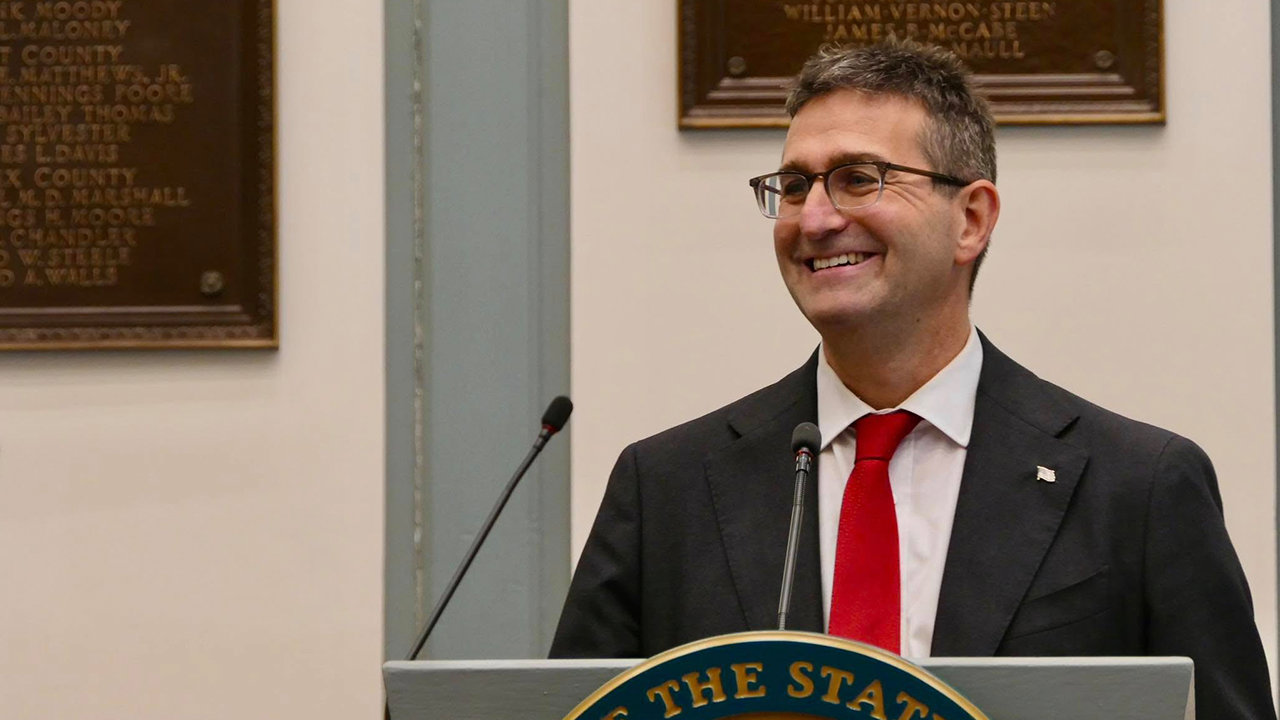Utah
Meet the women who transformed dance education, contemporary dance in Utah

Estimated read time: 8-9
minutes
SALT LAKE CITY — The Ririe-Woodbury Dance Company is celebrating 60 years of inspiring people to find joy through movement.
The female-founded company was started by Shirley Ririe and Joan Woodbury in 1964, with a mission that every person deserves to dance.
Both Ririe and Woodbury left the teaching and directing worlds behind after decades of work, but their legacy is continued by the company.
A company with a mission
Joan Woodbury didn’t know dance was going to be her career, but she did know it was the “one thing in my life that brought joy and pleasure,” she told KSL.com.
The Cedar City native, received an honorary doctorate degree and a standing ovation for her dedication to the craft at her alma mater Southern Utah University’s April commencement.
“You worked hard to get here and there’s so many wonderful unknowns in your future,” Joan Woodbury told the graduates. “Don’t judge people, but relish those differences. These are the necessary ingredients to a life full of adventure, purpose and love.”
She became the first full-time dance instructor at the University of Utah in 1951, at age 26. Because dance was part of the women’s physical education department, she taught dance technique, improvisation and composition, folk and square dance, swimming, tennis and body mechanics.
The next year Joan Woodbury met Ririe, who was her teaching counterpart at Brigham Young University. The two started working together on choreography and created the company Choreodancers, for university students.

Choreodancers was disbanded in 1955 because Joan Woodbury, her husband and her brand new baby moved to Berlin so she could study there as a first Fulbright Scholar in dance. Ririe stepped in for Woodbury at the U. while she was away, and once Joan Woodbury returned, the two job-shared the professor position so they could both take care of their young children.
Joan Woodbury was a professor for 47 years, and Ririe a professor for 39 years.
The women started the Ririe-Woodbury Dance Company in the hopes of creating a space for choreography, performance and dance education. According to Joan Woodbury’s daughter, Jena Woodbury, they did exactly that.
“I went to the U. of U. because of my mother and Shirley. Because as I grew up, I saw them teach — and they were both phenomenal teachers, just really spectacular teachers,” Jena Woodbury said. “I was really lucky. I’ve had great role models. As two women, I have just the utmost respect for them for what they managed to accomplish in Utah, in what was relatively a fairly new art form in America.”
Jena Woodbury said the two founders were so successful because they were teachers, dancers and choreographers who played on each other’s strengths to make a well-rounded performance company and a robust dance education and outreach department.
“They had no funding that started them,” she said. “They just started it; and through their tenacity and business smarts, they built a company.”
Jena Woodbury grew up in dance, being born just a year before the company was started.
“It’s been part of my life experience, my entire life. I call it the other sibling,” Jena Woodbury joked, saying her brothers would agree.
She danced from age 3 to age 22 before switching to working in arts administration for companies in Portland, Oregon, and on international tours. She moved back to Utah to be the booking and touring manager for Ririe-Woodbury then took over as executive director in 2011.
The legacy of the founders
Ririe and Joan Woodbury, both now in their 90s, agree their hard work has made an impact.
“The work we did for all those years reflects in our motto: Dance is for everybody! We made dance accessible to as many people as possible,” Ririe said.
Joan Woodbury said through the company she has been able to give back by passing on the gift of dance.
“Sometimes I look and think I haven’t accomplished much of anything,” she said. “But I’ve opened the doors for many people to come into a field and dedicate their information and their spirits and their love to something they love just as much as I do.”

Increasing dance education has allowed people to experience human existence in a way they might not have been able to discover before, she said.
“People everywhere — children, adults, any human being who has a lifeblood of movement and enjoys participating in an activity that is so beautiful — has been affected by what Shirley and I and the rest of the dance crew have done in this state,” Joan Woodbury said.
Teaching children to dance affects their minds, bodies and souls and helps them learn to be joyful and love life, she said.
The founders were educators with a philosophy that everyone should have access to dance as an art, no matter their physical ability, race or economic background. Because of Ririe and Joan Woodbury, dance education was transformed and Utah is one of few states that has a dance instructor in every high school.
“It really is something that is truly a human experience to dance. It is a community builder, it builds self-esteem, it builds your cultural awareness,” Jena Woodbury said. “They really believed that dance … really builds us as human beings. It also builds future dancers and future audience members and dance appreciators.”

Jena Woodbury was the first executive director of Ririe-Woodbury Dance Company after her mother, and she was tasked with ensuring the company mission continued even though her mother and Ririe were slowly stepping out. In June, she passed the position on to Thom Dancy in preparation for the company’s 60th season.
“During my tenure, I’ve always known I wouldn’t be working like my mom did, in her 80s, but I’ve always felt it was important for my time there to prepare the company for the future when a Woodbury or Ririe wasn’t sitting at the head of the table. I was putting policies in motion, getting some stability for the company so it could continue for another 60 years,” Jena Woodbury said.
Artistic director Daniel Charon said the work Ririe and Joan Woodbury did create a reputation that enables the company to continue impacting people. He said many dancers and administrators who have worked for the company have gone on to do great things because the founders brought out the best in everyone — mentoring, nurturing and encouraging each person.
The founders have been slowly phasing out of their involvement in the company, but they still attend events and shows. And Joan Woodbury has been “a steadfast member” on the board of directors for the last 10 years, Charon said.
Charon didn’t get to see Woodbury teach too much, but he could always feel how passionate she was about dance, saying dance almost became a religion because it seemed so sacred to her.

“I’ve seen her light up so many times coming into the studio and being around dancers and helping with performances, giving people advice. She is so seeped with information and knowledge and is very forthcoming in expressing her ideas,” Charon said.
Charon said he has learned so much from and been inspired by Woodbury, who he says would always share her opinion with a sparkle in her eye.
“I find that often, about 99% of the time, she is actually very correct, so I really learned to listen to her because she knows what she’s talking about,” he said. “She’s just the kind of woman you never forget.”
The founders’ legacy lies in their belief that dance is crucial for a developing child as they learn creativity, cooperation, trust, relationship building and more, Charon said.
Ririe and Woodbury created curriculums for dance in schools and toured the state doing lecture demonstrations, something the company still does.
“You think about 60 years of dance and how many people will go through that company and how many kids you reach through the education, that’s a lot,” Charon said.
The future of the company
“The lovely and brilliant thing about the company mission is that the way you fulfill it is very fluid and flexible. I would hope that it continues with a true commitment to the mission and to being an arts and humanities organization,” Jena Woodbury said.
The company has a commitment to diversity, equity and inclusion; and the education department focuses on individuals and the community to “build a better humanity,” she said. The way things are run will change, Jena Woodbury said, but that’s how the company will keep growing.

Charon said the company is now in a place of evolution, but everything they do moving forward will be deeply embedded with the mission of dance for everybody. The company rests on the founders’ shoulders, he said.
“Our programming and what we do is a total extension of both of them. It’s hard to separate Shirley and Joan, but I think it’s just baked into the fabric of the company,” he said.
The company’s performance season will kick off the 60th anniversary with a “retrospective tribute” to Ririe and Woodbury that showcases their choreography on Sept. 21-23. Other performances of the season will include a young artist showcase, choreography from company members, and new works by Charon and the previous artistic director Charlotte Boye-Christensen.
“I hope people attend the shows, because Ririe-Woodbury plays such an important role on the national dance scene. We bring a relevant voice to the national dance scene in the creation of contemporary dance,” Jena Woodbury said. She hopes people will recognize the influence the Ririe-Woodbury Dance Company has had on the state.
Photos
Related stories
Most recent Entertainment stories
More stories you may be interested in

Utah
Audit finds problems with Utah public school construction standards

SALT LAKE CITY — A new performance audit released Tuesday by the Office of the Legislative Auditor General (OLAG) reveals consistent problems across the state when it comes to construction standards for public school projects.
The OLAG says that the Utah State Board of Education (USBE) is not sufficiently overseeing school constructions and that the legislature should seek alternatives.
One cornerstone of public safety in schools is how those facilities are built. In recent years, there is plenty of building being done.
“Since 2019, [USBE] have overseen over $3.6 billion worth of constructions,” said Jesse Martinson with OLAG, who helped manage this audit.
But does all that work meet state standards?
“We looked at 30 projects and found that 87 percent (26 of the projects) did not receive a permit from USBE,” Martinson said.
The legislative auditor general found that it often hasn’t. In another example, out of 41 local districts statewide, only five of their building officials had proper code certifications.
“These codes represent the minimum standards to protect the life and safety of occupants,” said Jake Davis, who’s credited as the lead performance auditor on this report with OLAG.
Davis says there were also problems with inspection reporting compliance, from projects missing plan reviews to multiple schools not building firewalls.
“We are at a decisive point in the future of oversight of school construction,” said Deputy Superintendent Scott Jones with USBE.
Jones says the state board requested this audit because while they have a process for handling non-compliant buildings, resources are limited.
“It doesn’t go unresolved or unnoticed – it just takes time,” Jones said. “Myself and one other position are dedicated to school construction oversight.”
Another issue the audit uncovered was that one school district’s bid practices were concerning.
The unnamed district gave 18 construction projects exclusively to one contractor since 2014, with the costs totaling up to over $250 million.
The auditors say this bundling tactic may not be inappropriate, but it “exhibits the appearance of impropriety.”
House Speaker Mike Schultz (R-Hooper) said any changes implemented should also aim to better benefit the taxpayer.
“Because you look at these Taj Mahals that are being built — all across the state,” said Speaker Schultz. “In many cases, it’s 25, 30, 40 percent more than what needs to be spent.”
So lawmakers now have to lay the groundwork for that future.
“There are a lot of independent inspectors out there that can be hired,” Speaker Schultz said. “I think that can be happening and, quite frankly, should be.”
Whether the answer is designating a new state agency to absorb USBE’s responsibilities, giving more power to local agencies or improving the current system, Senate President Stuart Adams said this project is a tough one they intend to tackle together.
“We all want the same things,” said Jones. “We want our kids to be educated in very safe environments and very safe buildings.”
Utah
Utah Jazz’s Lauri Markkanen Floated in Trade Rumors With 76ers

Could the Utah Jazz look into a Lauri Markkanen trade once again this summer?
When asking around the league, a few teams seem to think that possibility is yet again on the table for the Jazz front office.
According to ESPN draft expert Jonathan Givony, some teams across the NBA expect the Philadelphia 76ers to investigate a trade involving their third-overall pick, and Markkanen, along with Kevin Durant, could be potential targets.
“Some teams expect the Sixers to be active in trade conversations, with names such as Kevin Durant (Phoenix) and Lauri Markkanen (Utah) as potential targets in packages that could include Paul George and the No. 3 pick,” Givony said. “Sixers president of basketball operations Daryl Morey has made a career of being active and aggressive on the trade front, but historically, it’s rare to see a top-three pick being traded.”
The Jazz silenced any and all trade chatter on Markkanen at the end of last summer heading into the 2024-25 campaign by inking him to a five-year, $280 million extension, effectively placing a trade restriction on his services throughout the entirety of the regular season.
But now, the offseason is getting underway. That trade restriction is no longer in play, and with it could come a change of tune from the Jazz brass concerning a Markkanen trade, if they see an opportunity come their way that they like. Perhaps a trade into the top three to acquire a young franchise cornerstone could be the move to push the needle.
Markkanen comes off an injury-ravaged and up-and-down season, one where he played in 47 contests to average 19.0 points, 5.9 rebounds, and 1.5 assists on 42.3% shooting from the field. While not up to the standards he’s posted for the past two years in Utah, the league knows what Markkanen can do at his best, and maybe for Philadelphia, he could be the win-now piece they covet more than a young prospect.
However, it still remains up in the air if this Jazz front office truly wants to part ways with their star talent in Markkanen. Just last offseason, we saw how highly Utah valued their All-Star forward in trade rumors with those like the Golden State Warriors, where the saga ended in their asking price being too high, and inevitably putting pen to paper on a new extension.
Could the Jazz have changed their mindset after one year into Markkanen’s contract? It’s hard to say, but to pick up a long-aspired high-ceiling young player into the top three of the draft, maybe Utah finally ends up pulling that trigger.
Though with an executive like Danny Ainge at the helm, it’s hard to map out how any offseason could eventually transpire. This time around is no different.
Recommended Articles
Utah
Utah man kidnaps family for 6 months, lying they needed protection from 'cartel,' police say

SALT LAKE CITY — A Utah man accused of holding his girlfriend and her family in their home for six months on a lie that “cartel” members were after them has been arrested.
Dominic Garcia, 23, faces 28 counts, including seven each of kidnapping and assault, after his arrest Saturday. He remained held Monday in the Salt Lake County jail, NBC News reported.
He allegedly told police he lied to the family about needing to protect them from a nonexistent “cartel,” according to the police affidavit.
“Dominic said that he continued this lie for several months because he did not know how to stop it in fear that they would not like him,” the affidavit reads.
He had no attorney listed to speak on his behalf.
Garcia moved in with the family of seven in the Salt Lake City suburb of Millcreek in December. Soon after, he allegedly told them his own family had business ties to a cartel and the family needed to protect themselves.
Garcia allegedly began carrying a handgun and repeatedly told family members the cartel would kill them if they did not do as he told.
Other family members allegedly told police Garcia, at times, kept them from leaving the house for more than short periods.
Police went to the house after getting a call from someone inside, according to the affidavit.
“The complainant reported they weren’t able to take it any longer, and they were holding Dominic at gunpoint until police arrived,” the affidavit states. “Officers arrived and took Dominic into custody without incident.”
-

 Education1 week ago
Education1 week agoA Professor’s Final Gift to Her Students: Her Life Savings
-

 Politics1 week ago
Politics1 week agoPresident Trump takes on 'Big Pharma' by signing executive order to lower drug prices
-

 Culture1 week ago
Culture1 week agoTest Yourself on Memorable Lines From Popular Novels
-

 News1 week ago
News1 week agoAs Harvard Battles Trump, Its President Will Take a 25% Pay Cut
-

 News1 week ago
News1 week agoWhy Trump Suddenly Declared Victory Over the Houthi Militia
-

 Education1 week ago
Education1 week agoHarvard Letter Points to ‘Common Ground’ With Trump Administration
-

 Culture1 week ago
Culture1 week agoBook Review: ‘Original Sin,’ by Jake Tapper and Alex Thompson
-

 News1 week ago
News1 week agoAustin Welcomed Elon Musk. Now It’s Weird (in a New Way).

















